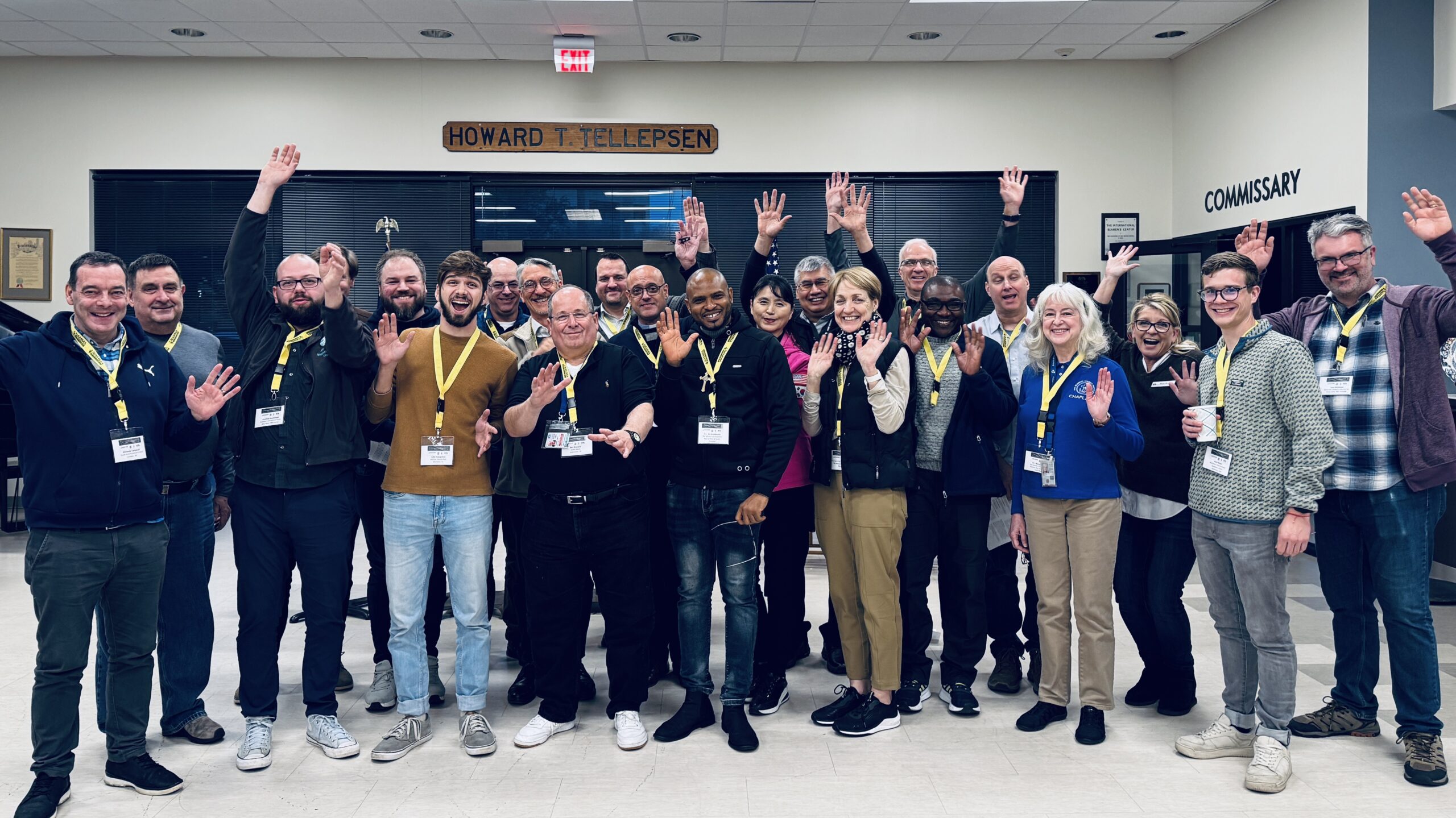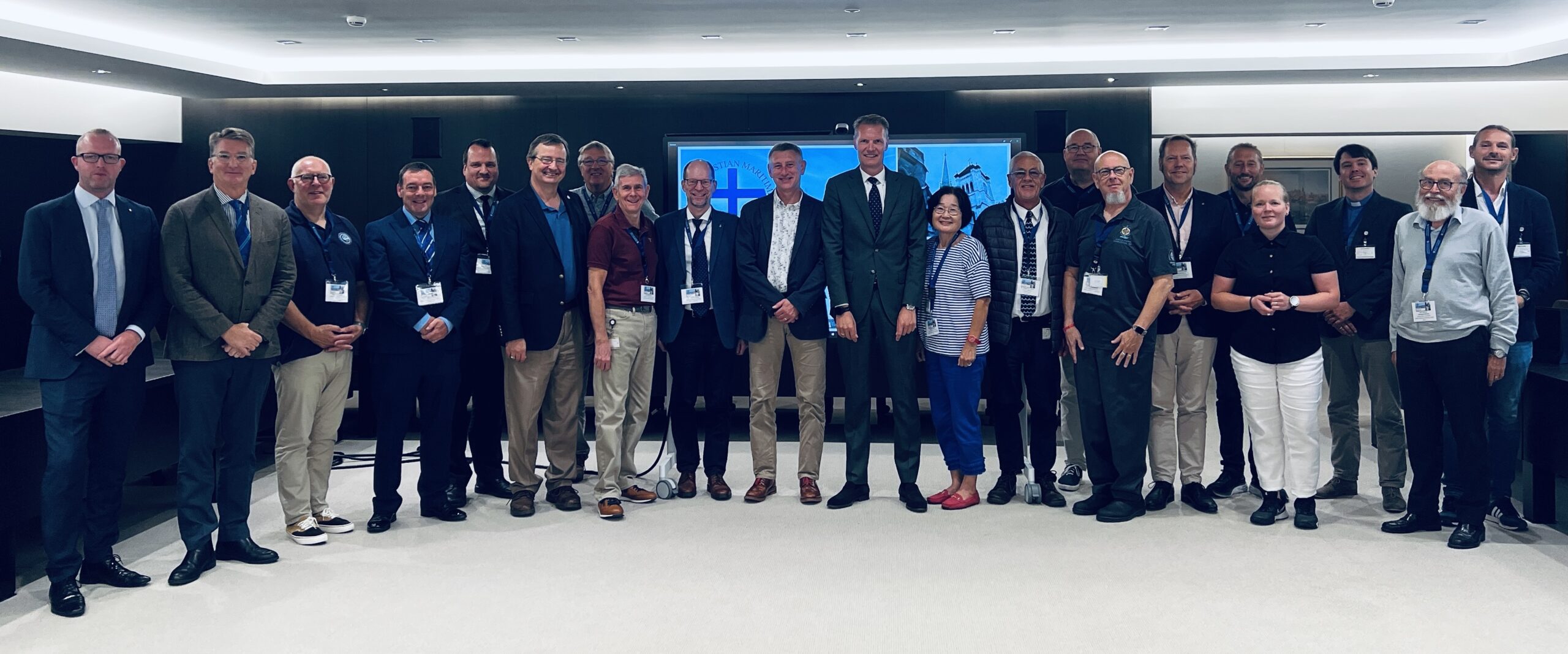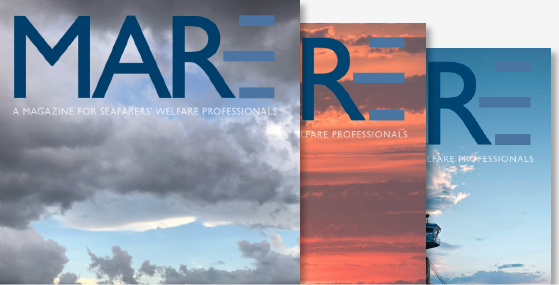On the week of January 27, chaplains, ship visitors, center administrators, and others involved in maritime ministry from all over the world convened on the Houston International Seafarers’ Center (HISC) to take a NAMMA-led course on serving seafarers. Students of the Houston School this year were given many reasons to thank God: learning more about how to serve seafarers, worship that emphasized the unique spiritual aspects of maritime ministry, friendships made with colleagues from many different cultures and ministries, and the exceptional hospitality shown by the Houston maritime community.
The course was organized by NAMMA this year, as part of a larger professional development programs supported by The TK Foundation and in partnership with worldwide members in the International Christian Maritime Association. NAMMA is deeply indebted to the HISC itself for the success of this year’s course, which for many years previous had not only hosted the event but designed and taught the curriculum. “The school started 44 years ago,” says chaplain and first-time local assistant Tom Edwards. “We were the first ecumenical center in the United States, and we knew that we wanted to share that model. Historically, we have been blessed with many denominationally-supported chaplains and were the largest port ministry in North America. It wasn’t that we thought, ‘we know how to do it better than everyone,’ but we saw that there were a lot of people trying to do this ministry who needed somewhere to get some training. We knew that we could do it, so we started doing it and have kept doing it.”
The week’s events were officially kicked off with a short prayer service in the HISC’s chapel, as was every day thereafter. Students read scripture passages especially pertinent to seafarers, took turns praying for maritime workers and different aspects of their lives, and heard short homilies about the work of ministry to them. Worship was intentionally ecumenical, welcoming and building up all the diverse kinds of Christian present. Hymns were sung for the most part a capella, and were a mix of familiar hymns like “Come Thou Fount of Every Blessing” and short prayers from the French Taizé community that were sung repeatedly and meditated upon. Many remarked on the beauty of the sound when the group sang together, due in part to the chapel’s acoustics and in part to the fullness with which the students joined their voices in worship.
Learning Together
Many different regions were represented among the students, both from within NAMMA and without. On the North American side, students came from British Columbia, Ontario, Nova Scotia, California, Louisiana, Alabama, and Florida. On the South American side, students came from Panama, Brazil, and Argentina. A few students were from relatively nearby in Texas, while one attendee had travelled from relatively far away in the United Arab Emirates. There was also a great diversity of denominational affiliations – there were large contingents from the Catholic Apostleship of the Sea and the Anglican or Episcopalian Mission to Seafarers, and Reformed, Presbyterian, Baptist, and non-denominational churches were also represented.
Greater even than the attendee’s diversity with respect to denomination and place was the attendee’s diversity with respect to experience. Everyone brought a different perspective on maritime ministry – there were several priests, a captain, a former coast guard officer, a former missionary, a seminarian, a bishop, and people experienced in business, charity, journalism, and politics. Some were board members in their local seafarers’ centers, some were one-person operations, others were experienced chaplains, and still others were just starting to work in maritime ministries (or working at starting new ones).
These different expertises complemented each other nicely in group conversations. In a discussion of difficult pastoral situations, for example, the case of a stowaway’s accidental death aboard a ship was brought up. In addition to feeling for the bereaved and the crew, many of the students worried about the young captain and whether he would have been fired for such an unfortunate circumstance he could not have foreseen. The captain among the students was able to reassure them that things would have likely turned out alright for him. On several occasions, a business perspective helped students consider how they could best implement the lessons they were learning practically, and of course experienced clergy gave invaluable advice. Less experienced students enjoyed the opportunity to learn from their colleagues, but also contributed as sources of inspiration and reminders of the challenges that face ministries and chaplains as they begin their work.
The course this year was especially honoured to be the site of the first regional meeting of the Anglican Mission to Seafarers in Latin America. “It has been wonderful for all our chaplains to finally meet each other,” said Fr Ian Hutchinson Cervantes, the regional director. “Although we have had a presence in Latin America for well over a century, the various chaplaincies have never had a direct relationship between each other. In the past, each mission’s relationship has been directly with London. It now makes more sense for missions in Latin America to be in relationship, support each other, and pray for one another, particularly as all of our chaplains are Latin Americans themselves.”
As many of the Latin American missions are quite new, Fr Ian found it fitting to organize the regional meeting to coincide with a chaplaincy training. “Learning history has been invaluable for locating the Mission to Seafarers’ own story and finding a sense of our region’s unique identity. But I am also hoping for cross-pollination here. I would like to think that the North American students are being challenged by facing a reality that is not North American. I suspect that this will help them too think and grow, and enrich their interaction with other cultures in ports.”
Equipment for Ministry
Course curriculum covered all of the major issues involved in ship visiting and running seafarers’ centers. Although classes were held over a week in Houston, students came into the classroom having already learned new things about ministry to seafarers through NAMMA’s online learning materials over the previous month. For the students’ first unit, they took the ship welfare visitor course to learn the basics of navigating ports, entering ships, and having valuable conversations with seafarers. In the following weeks, they got to know Jason over the internet through weekly video presentations on sea blindness, the shipping industry, and the preparation that make ministries successful. Students also got to learn a bit from each other from answers to content questions posed online.
During the week in Houston, students were treated to many engaging and informative guest speakers. Many of the speakers were pastoral experts and veterans of maritime ministry, and students learned from them how to turn difficult ministry situations into growth opportunities, how to minister to seafarers over long distances, how to listen actively, and how best to run a ministry organizationally. Some other lessons were featured by experts in pertinent fields outside maritime ministry, including coast guard experts on smuggling, an excursion to the Seafarers’ International Union Hall to visit with SIU Gulf Coast VP Dean Corgey and ITF inspector Shwe Tun Aung, and a workshop on the Maritime Labour Convention 2006 from Douglas Stevenson of the Center for Seafarers’ Rights. Class time was not exclusively serious, either – learning was enlivened by role-playing chaplaincy situations, competition between small groups on questions of law, and not infrequent banter about rival sports teams.
The online component of the course made for a good background resource for ship visitors, as April, a seminarian and HISC intern, noted. “Learning about the different ships, flags, and other sides of the shipping industry was very valuable in solidifying my understanding. The necessity of preparation before ship visits was another important lesson. As ministry leaders our attention is really on the spiritual side and being there for the seafarers, but there is a lot of preparation that goes into that. One of my biggest fears getting on a ship is having a conversation with someone without knowing some important background information about that ship. What if I say something that is offensive? The lesson on preparation taught me how to address that worry.”
April also noted the value of the in-class lessons and the excursions to key institutions in Houston’s port community. The online and in-person lessons balanced and enhanced each other. “In class we learned about the different laws and regulations, whose jurisdiction we are under and why. That way I know, if there is a problem, whom to call first.”
The class on maritime labor law and the excursion to the Seafarers’ International Union Hall were particularly relevant to April, because local ITF inspector had recently helped her secure pay for an unpaid crew. She enjoyed the opportunity to meet the people who had helped her help seafarers in person. “It is really important to know whom to contact, where they are, and how to create these relationships. Our ministry is for community, and we need to be a community working in partnership with one another. There is no such thing as individual ministry. Serving seafarers in my way means me serving them with the support of all these different organizations.”
A Warm Houston Welcome
The students were very warmly welcomed and well-taken care of by the HISC, local churches, and other port institutions. Drives and suppers were provided by the HISC’s chaplains. Faith Presbyterian, Memorial Drive Presbyterian, the Norwegian Seamen’s Church, Mercy Ships, and St Alphonsus Catholic took turns providing rather lavish lunches, including delicious cultural fare and 28” pizzas. The recently relocated Houston Maritime Museum also opened on a Monday specifically to give the chaplaincy students tours, and the course ended with a ride on the Sam Houston Tour Boat. One of the most special gestures was the HISC’s inviting the students to its 50th-anniversary party on January 31, where they got to enjoy cake, learn the history of the center, and meet many of the people involved in it.
“The industry and the port have always been very supportive of the school,” said Tom Edwards. ”Because Houston is one of the largest ports in America by tonnage, I cannot think of a place with more resources to put a school on and expertise available to make available to students.”





